LED China 2014: The Exhibition of LED Technologies in China
Exhibitions in the new Exhibition complex in Guangzhou are always impressive: when approaching the Complex one gets amazed by the sheer size. It seems that an enormous ship of unusual shape has landed over the city. Indeed, the “aliens” did a great job of building a convenient ground for promoting Chinese and extra-Chinese technologies.
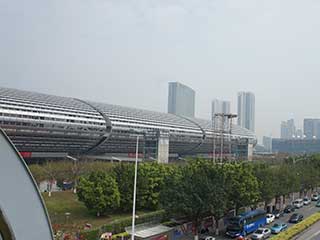 “The Spaceship” of the Guangzhou Exhibition Center
“The Spaceship” of the Guangzhou Exhibition CenterTo venture inside you have to be an exceptionally fit person. The enormous hall, kilometer-long corridors, heavy bags with advertising leaflets – all add to the hard tracking exercise. The Exhibition catalogue reads like an encyclopedia on electronics: it has everything from LED lighting to digital advertising, from industrial machines to diverse finished products.
The Exhibition is dedicated to almost everything: electronics and electrical energetic, LEDs and LED light technology, optics, laser technology, photonics etc. Exhibitors promote all aspects of LED industry from various types of light emitting diodes (LED, OLED, LD, EL) to LED materials and components, industrial equipment, LED systems of outdoor and indoor lighting, LED screens, signs and curtains, LED packaging and OLED displays. But the key word that characterizes the Exhibition is “advertising”.
Naturally, the Exhibition attracts numerous foreigners eager for a profitable deal on a notoriously cheap Chinese market. But even without foreigners the Exhibition is a success due to high level of internal market growth in China. In 2013 China’s advertising spending reached 429.5 billion yuan (70 billion US dollars), up 10.7% from 2012. The report also predicts that in 2014 China advertising spending will reach 480.1 billion yuan, up 11.8% from 2013.
The Chinese are not planning to stop there. The report on China’s advertising market forecasts is optimistic. To some extent, this also confirms the forecasts released by International Monetary Fund in July. According to the forecast, China’s GDP will grow by 7.8% in 2013, growth in 2014 will reach 7.7%. Compared to the global economic growth in the next two years, the forecast is only 3.1% and 3.8%. However, Chinese economy still maintained a high growth. Not a bad deal in times of world depressed economy.
Experienced readers would immediately comment that the major part of these budgets is spent on TV advertising. Indeed. China media still put the major investment in TV and this is benefit from the huge audience. In 2013 China’s TV advertising spending is expected to reach 220.7 billion yuan (36 billion US dollars), accounting for 51% of all advertising spending. Another 26% goes to Internet-based and printed media advertising. And the meager 23% of the 70 billion dollars are left for the Chinese OOH advertising industry. Judging by the Guangzhou Exhibition this is quite a sufficient amount.
A few words about the Exhibition proper. About 10 years ago correspondents of “Screens.ru” attended a similar event in Beijing. It was a pitiful show: a couple of small halls, two dozen exhibitors, five- or six of who bravely displayed LED screens of good (for that period, though) quality.
10 years later the Guangzhou Exhibition is vibrating with light of hundreds of LED screens, media façade structures and signs. A buyer will be easily lost in this sea of flashing light, in a labyrinth of halls with thousands of aggressive exhibitors. The logistics is easy when you know what you are looking for. The organizers did an excellent job. But if you came to browse you will first drown in the flood of information and smiles of insistent Chinese salesmen.
The products displayed are very similar. The prices are very similar. But to understand who is better, with higher quality, more reliable, who will stay in business several years after the sale (when the guarantee period is over and it is time for maintenance, replacement of spare parts etc.). The exhibition is a good event to make a first acquaintance. But then one would be advised to visit the factory to understand better if the first impression was correct.
The February Exhibition in Guangzhou is characterized by several tendencies in the area of LED technologies:
- The latest fashion is manufacturing of LED modules in die-cast cabinets. The technology was initiated by Barco a few years ago. Today this is high fashion in China. Naturally, all manufacturers explain that they are exclusive patent holders and offer colorful licenses as a proof.
- The cabinets continue to slim and lose weight that makes rental and stationary screens almost identical.
- LED curtains for media façades are everywhere. The technology matured and works well in many countries today.
- The LED screens are rarely square or rectangular these days. It would be too simple and predictable. Modern shapes are convoluted, ingenious and sophisticated. Anything will do as long as it is non-standard.
- The pixel pitch is getting tighter by the day. As a result, the screens become brighter and the image has better contrast. You may easily find a LED screen with resolution as good as that of and LCD display.
- LED screens attempt to compete with LCD in another area – in 3D imaging.
- Dozens of new companies appeared in the market who are designing, manufacturing and promoting their own control systems for LED screens and LCD networks. This is a serious and concerted effort to push the so far indisputable leaders - LINSN, DB Star and Nova – out of the market.
In other words, the Exhibition is useful and worthwhile. It proves an obvious fact: the LED is a new power, and the recently popular technologies of neon advertising and incandescent lamps have lost the battle.
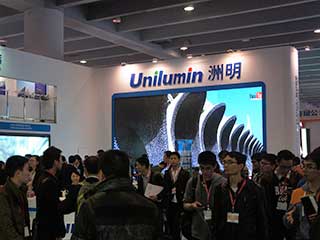 |
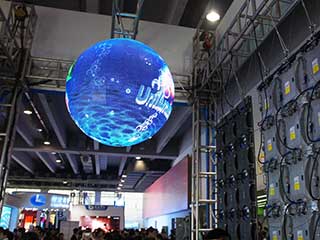 |
| Unilumin – one of the Chinese companies with numerous projects in China and other countries | LED balls look exceptionally well and they stopped being a unique product |
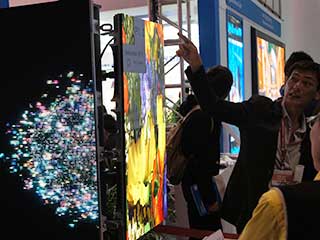 |
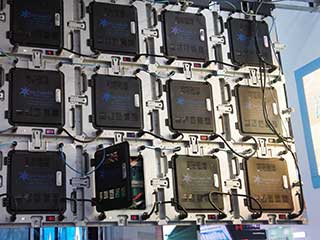 |
| LED cabinets noticeably slimmed | Modules and cabinets in aluminium die-cast frames |
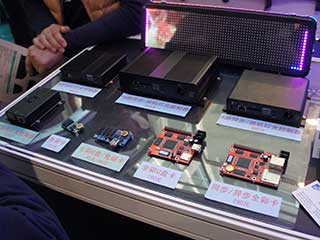 |
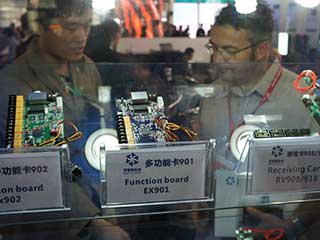 |
| Competitors are eager to storm the market of control systems for LED screens and LCD networks | |
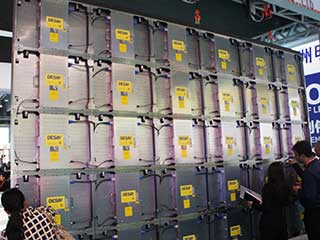 |
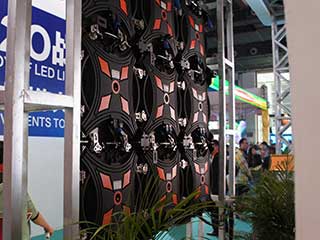 |
| Just a few years ago the backside of a LED screen looked like a web of cables | Futuristic frames: when image quality is similar to others, you have to find a way to stand out |
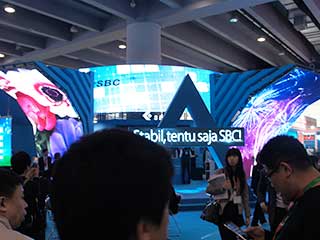 |
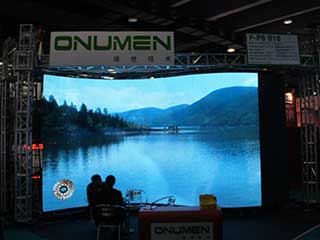 |
| Innovative shapes and forms of LED structures | |
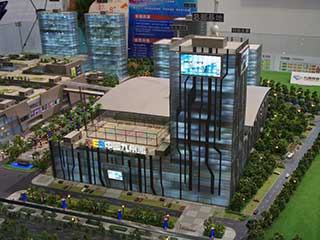 |
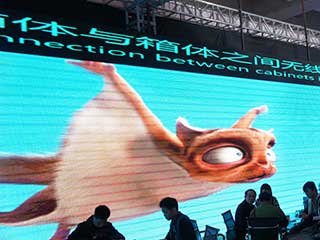 |
| LED curtains make LED structures seem weightless and ephemeral | 3D: the monsters are now charging at viewers from both LED and LCD screens. Beware! |





